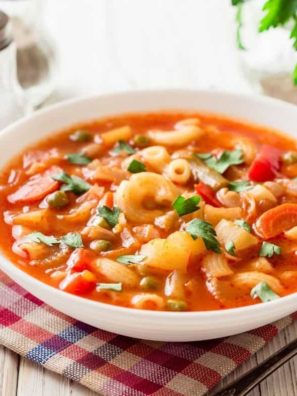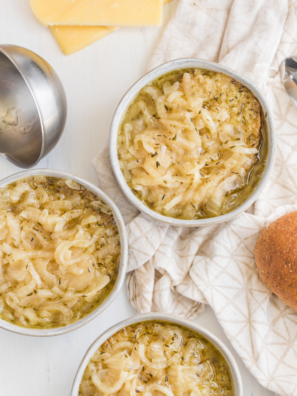This Low Sodium Vegetable Stock Recipe (No Salt Added) recipe allows you to create a deeply flavorful, completely salt-free base for soups and sauces right at home. By utilizing aromatic vegetables and fresh herbs, this stock provides rich, complex savory notes without the unnecessary added sodium found in most store-bought varieties.
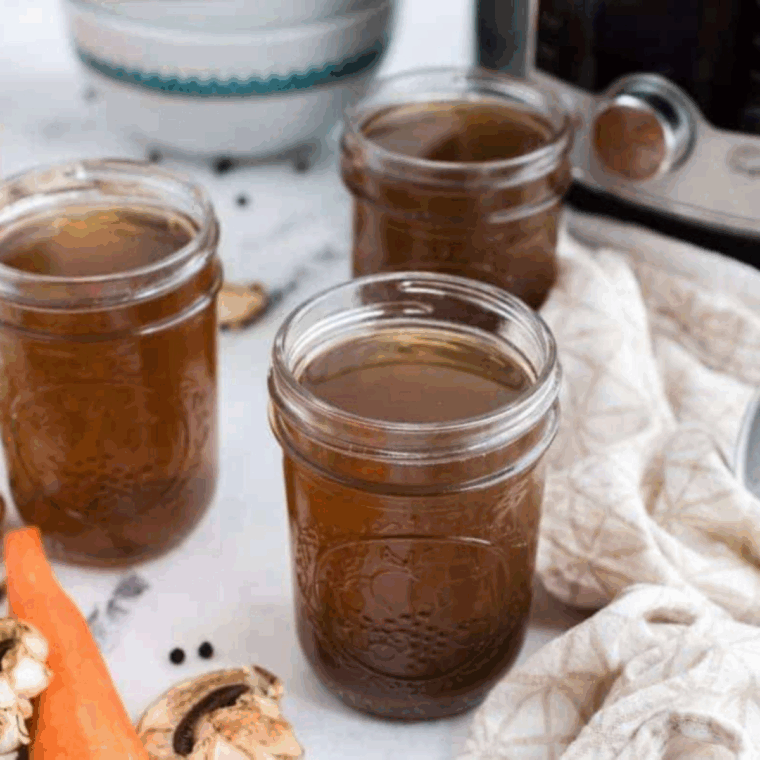
If you are looking for a foundational ingredient that offers maximum flavor control without compromising your health goals, this Low Sodium Vegetable Stock (No Salt Added) recipe is an absolute kitchen essential.
Unlike store-bought cartons loaded with unnecessary sodium, this homemade version utilizes the natural sweetness of carrots, the aromatic punch of onion, and the depth of fresh herbs to create a rich, savory liquid that is the perfect, heart-healthy base for soups, risottos, and sauces.
Once you realize how easy it is to make a batch of this vibrant, salt-free stock, you’ll never go back to buying it!

Why You Will Love This Recipe!
- Total Sodium Control: You gain 100% control over the sodium content, making it perfect for those monitoring their salt intake or cooking for infants and toddlers.
- Superior Fresh Flavor: This homemade stock is vibrant, deep, and savory, offering a far richer, cleaner flavor than bland or overly salty store-bought cartons.
- Use Up Scraps: It’s an excellent way to use up vegetable scraps (like onion skins, carrot peels, and herb stems), reducing food waste in your kitchen.
- Foundational Ingredient: It creates the perfect, heart-healthy base for all your favorite soups, risottos, sauces, and stews without compromising taste.
- Cost-Effective: Making stock at home is significantly cheaper than continually buying high-quality, low-sodium store brands.
I use this recipe a lot in a lot of my recipes, such as INSTANT POT CORN CHOWDER, INSTANT POT VEGETARIAN CHINESE FRIED RICE, and INSTANT POT, EASY NEW ENGLAND CLAM CHOWDER.
Ingredients Needed
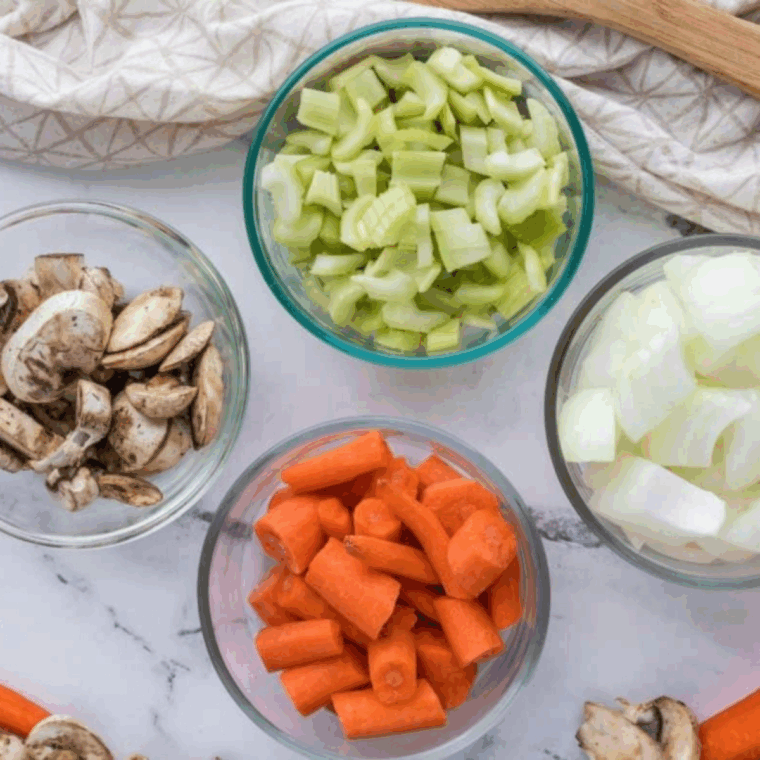
- Yellow Onions: Aromatic foundation provides essential savory, sweet depth.
- Carrots: Natural sweetness balances savory notes and adds color.
- Celery Stalks: Earthy, aromatic base builds body and complexity.
- Garlic Cloves: Adds pungent depth and subtle, delicious flavor.
- Parsley Stems: Fresh herbaceous notes create a bright, clean taste.
- Bay Leaves: Essential spice contributes delicate, aromatic complexity.
- Black Peppercorns: Provides a necessary, subtle touch of heat and spice.
- Water: Pure liquid extracts maximum flavor from vegetables.
How To Make Low Sodium Vegetable Stock Recipe (No Salt Added)

Step One: As you prepare meals throughout the week, collect clean and edible kitchen scraps like carrot peelings, onion ends, and celery leaves. Store them in an airtight container in the freezer until you have enough for a batch of broth.
Step Two: Start by turning on your Instant Pot and selecting the “Sauté” function. Allow it to heat up.
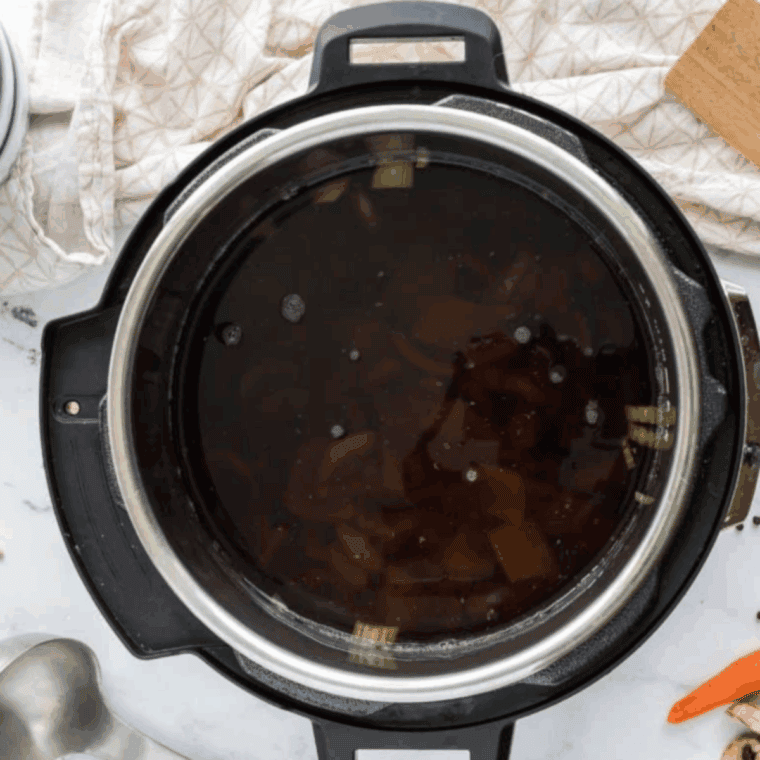
Step Three: Once the Instant Pot is hot, add your collected vegetable scraps, whole onions (with skin), chopped carrots, celery, garlic, and any optional vegetables you want to include. These will form the base of your broth.
Step Four: Add a generous handful of fresh herbs, peppercorns to the pot. These ingredients will infuse the broth with aromatic flavors. Cover the vegetables and herbs with cold water. Ensure the water level covers all the ingredients, but leave some space at the top of the Instant Pot to prevent overflow.
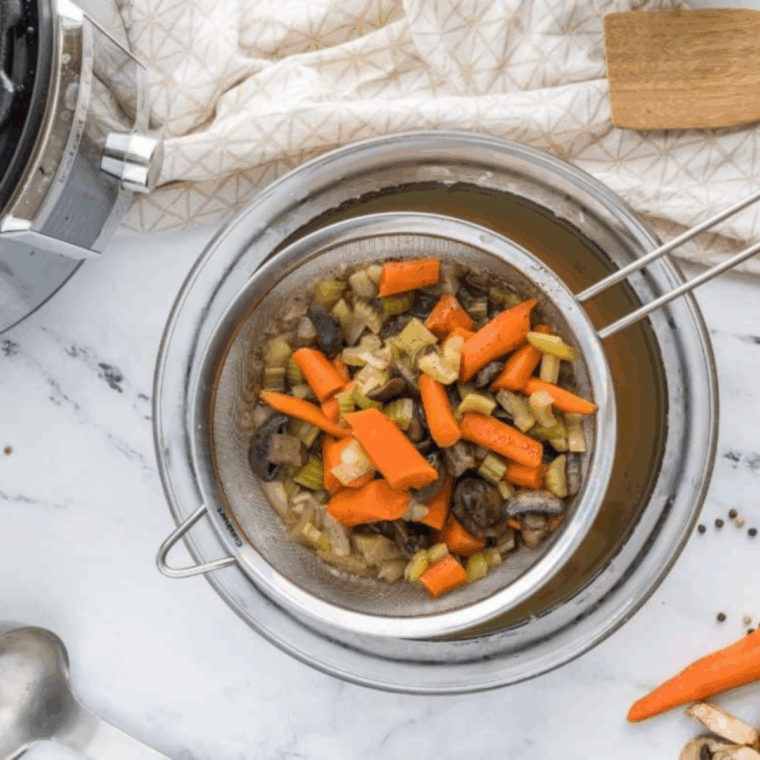
Step Five: Secure the Instant Pot lid, set the valve to the sealing position, and select the “Pressure Cook” or “Manual” mode. Adjust the cooking time to 30 minutes on high pressure. Once the pressure cooking cycle is complete, allow the Instant Pot to perform a natural pressure release for 10-15 minutes. Carefully turn the valve to the venting position to release any remaining pressure.
Step Six: Using a fine mesh strainer or cheesecloth, strain the liquid from the solids, capturing the flavorful broth in a large bowl or container. Discard the vegetable solids.

Low Sodium Vegetable Stock Recipe Tips
- Quality Scraps: Use high-quality, fresh vegetable scraps. Scraps from organic vegetables can yield a cleaner and more flavorful broth.
- Balance Your Scraps: Use various vegetable scraps to create a well-balanced broth. For complexity, include a mix of roots (carrots, onions), aromatics (celery, garlic), and optional vegetables.
- Skin-On Onions: Keep the skin on whole onions. It adds color and enhances the broth’s depth of flavor.
- Avoid cruciferous veggies: Avoid using strong-flavored vegetables like broccoli, cabbage, or Brussels sprouts scraps, as they can overpower the broth with a bitter taste.
- Use Fresh Herbs Sparingly: While fresh herbs are essential for flavor, use them sparingly. A small handful is sufficient, as their flavors can quickly become overwhelming.
- Don’t Overfill: Avoid overfilling the Instant Pot. Leave some space between the ingredients and the maximum fill line to prevent overflow during cooking.
- Natural Pressure Release: Allowing for a natural pressure release for a portion of the cooking time helps extract more flavors from the ingredients. This results in a richer broth.
- Relaxed Gradually: After straining, cool the broth gradually to room temperature before refrigerating or freezing. Rapid cooling can affect the flavor.
- Portion for Convenience: Freeze the broth in small portions, such as ice cube trays or small containers. This makes it easy to defrost only what you need for recipes.
- Label and Date: Label your containers with the date of preparation to help you keep track of freshness. Homemade broth typically stays good in the freezer for up to 6 months.
- Customize to Taste: Adjust the ingredients and seasonings to your taste preferences. Experiment with different herbs and spices to create a unique broth profile.
Storing and Freezing Instructions
- Storing: Once the stock is completely cooled, transfer it to airtight containers and store it in the refrigerator for up to 5 to 7 days.
- Freezing: For longer storage, pour the cooled stock into freezer-safe containers or ice cube trays and freeze for up to 6 months; stock cubes are perfect for quickly adding flavor to small sauces or sautés.
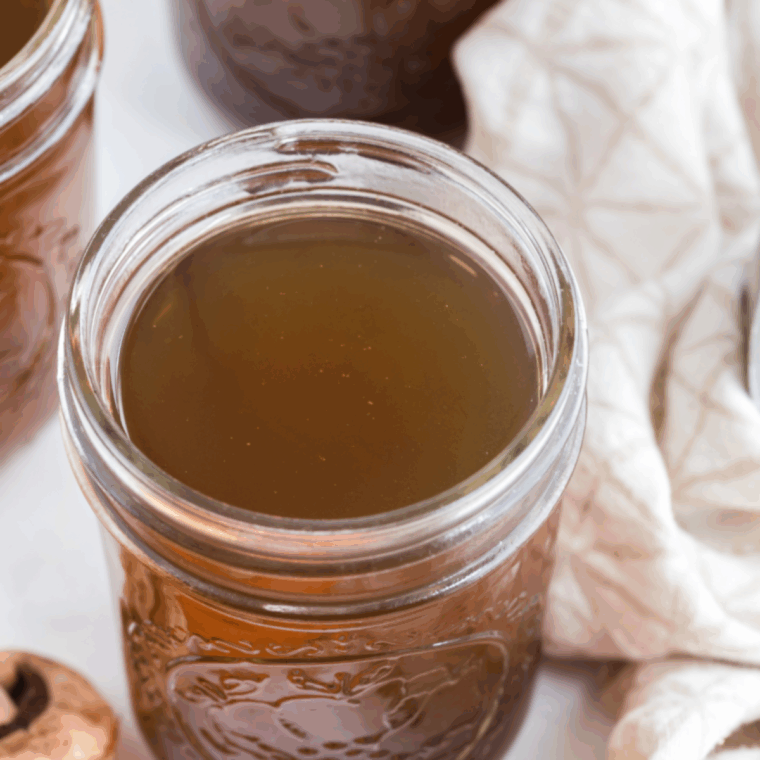
Easy Low Sodium Vegetable Stock Recipe Faqs
What kind of vegetables should I avoid using in the stock? Avoid vegetables that are too strong or bitter, as these flavors will dominate the stock. Specifically, avoid cabbage, broccoli, cauliflower, Brussels sprouts, or large amounts of potato skins, as they can make the stock cloudy or bitter.
Do I need to peel the carrots and onions before making the stock? No, you do not! In fact, leaving the peels on the onions and the skins on the carrots adds natural color and extra nutrients to the stock. Just ensure all vegetables are thoroughly washed before use.
How long should I simmer the stock for maximum flavor? For the deepest flavor, simmer the stock gently for at least 45 minutes to 1 hour. Simmering too long (over 2 hours) can cause the vegetables to break down too much and potentially make the stock taste bitter or muddy.
Can I freeze this stock if I don’t use it all right away? Yes, absolutely! Homemade stock freezes beautifully. Once cooled, pour the stock into freezer-safe containers, leaving an inch of headspace, or freeze it in ice cube trays for easy, small portions. It will last up to 6 month
More Easy Soup Recipes
- INSTANT POT BROCCOLI AND CHEDDAR CHEESE SOUP
- NINJA FOODI SOUTHWESTERN CHILI
- INSTANT POT SAUSAGE AND LENTIL SOUP
- INSTANT POT COPYCAT NORDSTROM’S TOMATO BASIL SOUP
- INSTANT POT CORN CHOWDER
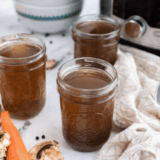
Low Sodium Vegetable Stock Recipe (No Salt Added)
Description
Ingredients
- large onion, peeled and cut up in large chunks
- 3 stalks carrots, peeled and diced
- 1 cup mushrooms
- 4 stalks celery, peeled and diced
- 10 cups water
- 2 teaspoons pepper
Instructions
- As you prepare meals throughout the week, collect clean and edible kitchen scraps like carrot peelings, onion ends, and celery leaves. Store them in an airtight container in the freezer until you have enough for a batch of broth.
- Start by turning on your Instant Pot and selecting the "Sauté" function. Allow it to heat up.
- Once the Instant Pot is hot, add your collected vegetable scraps, whole onions (with skin), chopped carrots, celery, garlic, and any optional vegetables you want to include. These will form the base of your broth.
- Add a generous handful of fresh herbs, peppercorns to the pot. These ingredients will infuse the broth with aromatic flavors.
- Cover the vegetables and herbs with cold water. Ensure the water level covers all the ingredients, but leave some space at the top of the Instant Pot to prevent overflow.
- Secure the Instant Pot lid, set the valve to the sealing position, and select the "Pressure Cook" or "Manual" mode. Adjust the cooking time to 30 minutes on high pressure.
- Once the pressure cooking cycle is complete, allow the Instant Pot to perform a natural pressure release for 10-15 minutes. Carefully turn the valve to the venting position to release any remaining pressure.
- Using a fine mesh strainer or cheesecloth, strain the liquid from the solids, capturing the flavorful broth in a large bowl or container. Discard the vegetable solids.
Equipment
- Instant Pot Pressure Cooker, or Ninja Foodi Pressure Cooker
- Ladle
Nutrition
Share this recipe
We can’t wait to see what you’ve made! Mention @forktospoon or tag #forktospoon!


